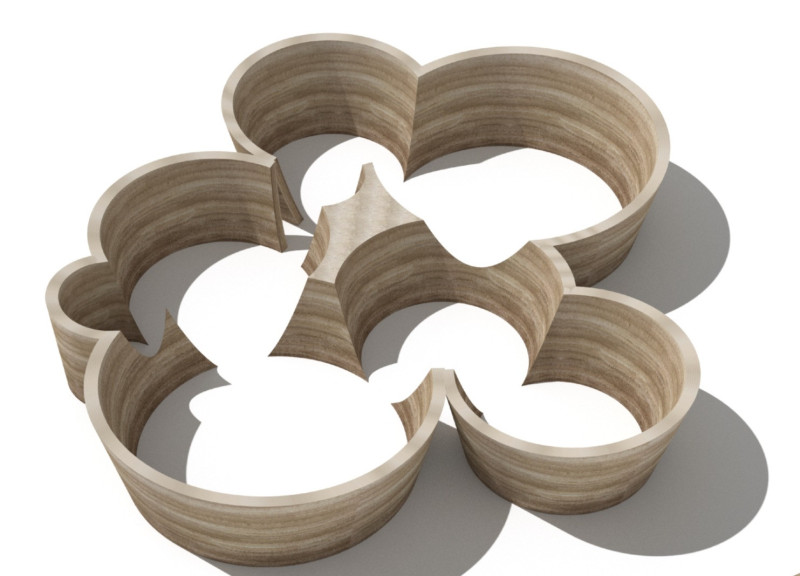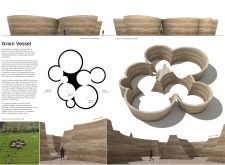5 key facts about this project
The Grain Vessel pavilion is situated in Ukraine, on a field that has been affected by the scars of war. This space functions as an exhibition area, showcasing the connection between the land and its historical significance while addressing ecological concerns. The design concept brings together cultural heritage and contemporary style, highlighting the relationship between people and the earth.
Materiality
Rammed earth is the primary construction technique used in the pavilion. This material speaks to the local context and underscores the importance of soil. It is a reminder of both the past and the resilience of nature. The texture of rammed earth not only serves as a structural element but also adds a sensory dimension, drawing people in to experience the space more intimately.
Spatial Organization
The pavilion features several cylindrical forms that are arranged in an unconventional manner. This layout encourages exploration and interaction, moving away from strict lines and symmetry. Inside, various openings and connections create pathways that allow visitors to navigate through the space. This design approach reflects the complexity of the environment surrounding the pavilion.
Architectural Expression
The exterior design reflects the fertile lands of Ukraine, an area known for its agriculture. It resembles a collection of ancient clay vessels that were once used for storing grain, emphasizing the importance of the land. This connection to agricultural history resonates through the structure, reminding visitors of the cultural ties to the soil.
Light plays an important role in the experience of the pavilion. Openings allow natural light to filter in, creating a warm and inviting atmosphere. The changing light throughout the day adds a new dimension to the space, encouraging visitors to engage with the pavilion in different ways.



















































